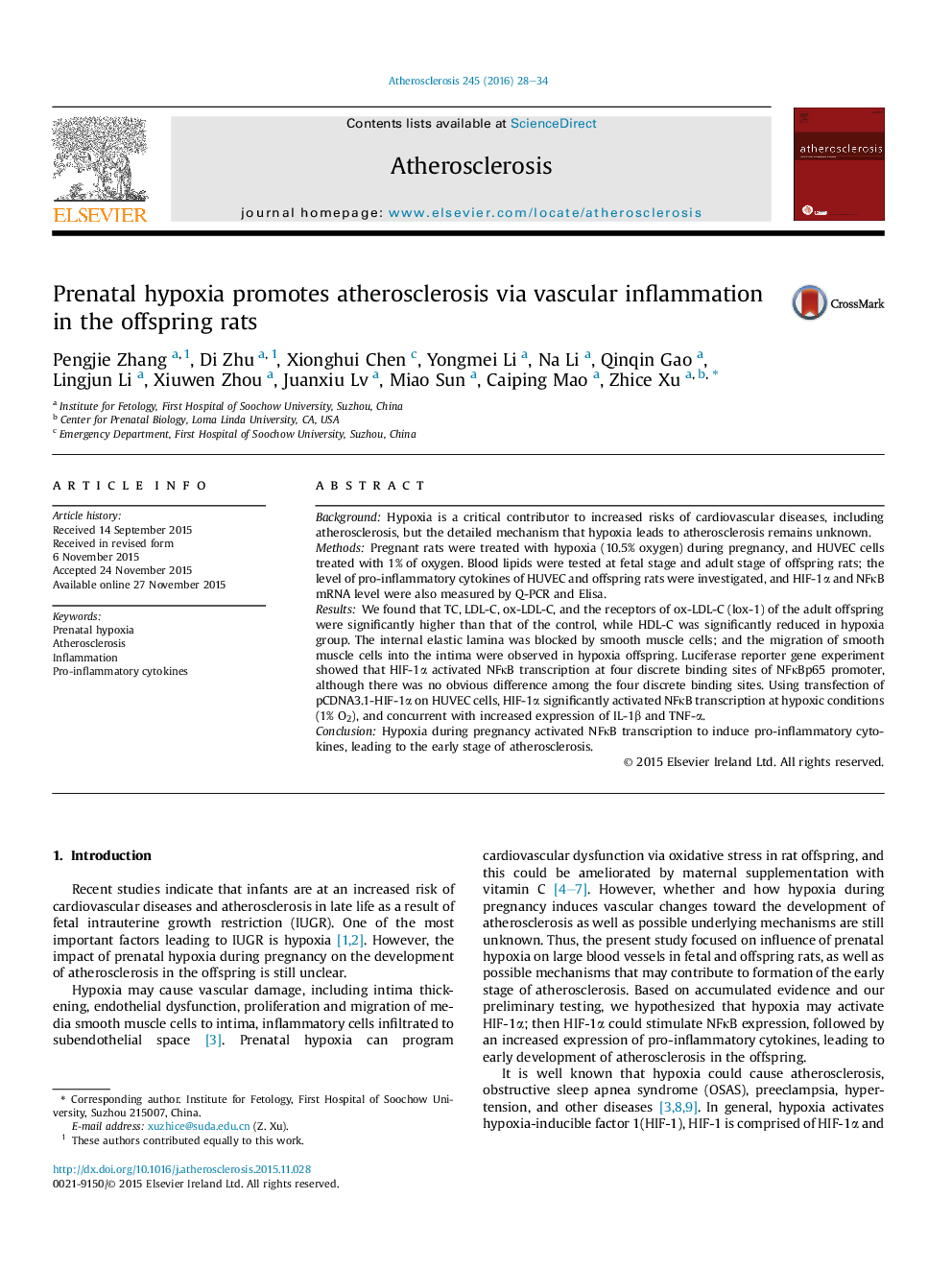| Article ID | Journal | Published Year | Pages | File Type |
|---|---|---|---|---|
| 5943520 | Atherosclerosis | 2016 | 7 Pages |
â¢Early stage of atherosclerosis was found in maternal hypoxia group, not CON group.â¢Atherosclerosis formation was caused by inflammation in offspring rats.â¢The activity among four HIF-1α binding sites in NFκBp65 promoter was equivalent.
BackgroundHypoxia is a critical contributor to increased risks of cardiovascular diseases, including atherosclerosis, but the detailed mechanism that hypoxia leads to atherosclerosis remains unknown.MethodsPregnant rats were treated with hypoxia (10.5% oxygen) during pregnancy, and HUVEC cells treated with 1% of oxygen. Blood lipids were tested at fetal stage and adult stage of offspring rats; the level of pro-inflammatory cytokines of HUVEC and offspring rats were investigated, and HIF-1α and NFκB mRNA level were also measured by Q-PCR and Elisa.ResultsWe found that TC, LDL-C, ox-LDL-C, and the receptors of ox-LDL-C (lox-1) of the adult offspring were significantly higher than that of the control, while HDL-C was significantly reduced in hypoxia group. The internal elastic lamina was blocked by smooth muscle cells; and the migration of smooth muscle cells into the intima were observed in hypoxia offspring. Luciferase reporter gene experiment showed that HIF-1α activated NFκB transcription at four discrete binding sites of NFκBp65 promoter, although there was no obvious difference among the four discrete binding sites. Using transfection of pCDNA3.1-HIF-1α on HUVEC cells, HIF-1α significantly activated NFκB transcription at hypoxic conditions (1% O2), and concurrent with increased expression of IL-1β and TNF-α.ConclusionHypoxia during pregnancy activated NFκB transcription to induce pro-inflammatory cytokines, leading to the early stage of atherosclerosis.
Graphical abstractDownload high-res image (137KB)Download full-size image
